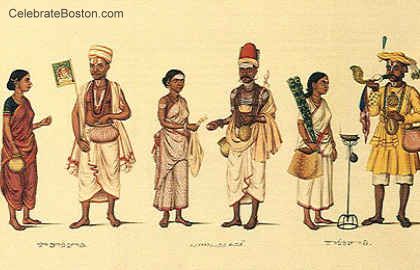The Boston Brahmin heritage is a unique and fascinating aspect of American history, characterized by a distinct cultural, social, and economic identity. The term "Brahmin" refers to the highest caste in the Hindu social hierarchy, but in the context of Boston, it describes a group of families who dominated the city’s social, economic, and cultural landscape for over two centuries. The Boston Brahmin heritage is a rich tapestry of traditions, values, and institutions that continue to shape the city’s character and identity.

Origins and History
The Boston Brahmin heritage dates back to the 17th century, when English Puritans settled in Boston and established a thriving commercial and cultural center. Over time, a group of families emerged as the city’s elite, distinguished by their wealth, education, and social status. These families, including the Cabots, Lowells, and Gardners, among others, formed the core of the Boston Brahmin class.
Throughout the 18th and 19th centuries, the Boston Brahmin continued to shape the city’s development, driving its growth through trade, finance, and industry. They were instrumental in establishing many of Boston’s iconic institutions, including Harvard University, the Boston Athenaeum, and the Museum of Fine Arts. The Boston Brahmin were also known for their philanthropic efforts, supporting causes such as education, healthcare, and the arts.
Characteristics and Values
The Boston Brahmin heritage is characterized by a distinct set of values and traditions. These include:
- Education: The Boston Brahmin placed a high value on education, and many of its members attended prestigious institutions such as Harvard University.
- Culture: The Boston Brahmin were patrons of the arts, supporting institutions such as the Boston Symphony Orchestra and the Museum of Fine Arts.
- Philanthropy: The Boston Brahmin were known for their charitable efforts, supporting causes such as education, healthcare, and the arts.
- Social status: The Boston Brahmin were deeply concerned with social status, and membership in the group was often determined by family ties, wealth, and education.
- Tradition: The Boston Brahmin placed a strong emphasis on tradition, preserving institutions and customs that had been passed down through generations.
Institutions and Landmarks
The Boston Brahmin heritage is reflected in many of the city’s iconic institutions and landmarks. These include:
- Harvard University: Founded in 1636, Harvard is one of the oldest and most prestigious universities in the United States.
- The Boston Athenaeum: Founded in 1807, the Boston Athenaeum is one of the oldest and most respected libraries in the United States.
- The Museum of Fine Arts: Founded in 1870, the Museum of Fine Arts is one of the largest and most visited museums in the United States.
- The Boston Symphony Orchestra: Founded in 1881, the Boston Symphony Orchestra is one of the most respected orchestras in the world.
- The Beacon Hill neighborhood: This historic neighborhood is home to many of Boston’s most iconic landmarks, including the Massachusetts State House and the Boston Common.
Decline and Legacy
The Boston Brahmin heritage began to decline in the mid-20th century, as the city’s economy and social landscape underwent significant changes. Many of the old Brahmin families lost their wealth and influence, and the group’s exclusivity and social status began to erode.
Despite this decline, the Boston Brahmin heritage continues to shape the city’s character and identity. Many of the institutions and landmarks established by the Boston Brahmin remain iconic symbols of the city, and their legacy can be seen in the city’s vibrant cultural and intellectual scene.
FAQ
- What is the origin of the term "Brahmin"?
The term "Brahmin" refers to the highest caste in the Hindu social hierarchy. In the context of Boston, it describes a group of families who dominated the city’s social, economic, and cultural landscape. - Who were some of the most prominent Boston Brahmin families?
Some of the most prominent Boston Brahmin families included the Cabots, Lowells, and Gardners. - What were some of the key characteristics of the Boston Brahmin heritage?
The Boston Brahmin heritage was characterized by a strong emphasis on education, culture, philanthropy, social status, and tradition. - What are some of the most iconic institutions and landmarks associated with the Boston Brahmin heritage?
Some of the most iconic institutions and landmarks associated with the Boston Brahmin heritage include Harvard University, the Boston Athenaeum, the Museum of Fine Arts, the Boston Symphony Orchestra, and the Beacon Hill neighborhood. - What happened to the Boston Brahmin heritage in the mid-20th century?
The Boston Brahmin heritage began to decline in the mid-20th century, as the city’s economy and social landscape underwent significant changes.
Conclusion
The Boston Brahmin heritage is a unique and fascinating aspect of American history, characterized by a distinct cultural, social, and economic identity. The legacy of the Boston Brahmin continues to shape the city’s character and identity, with many of its institutions and landmarks remaining iconic symbols of the city. While the group’s exclusivity and social status have eroded over time, its emphasis on education, culture, philanthropy, and tradition continues to inspire and influence the city’s vibrant cultural and intellectual scene. As Boston continues to evolve and grow, the Boston Brahmin heritage remains an important part of its history and identity, a testament to the enduring power of tradition and culture.
Closure
Thus, we hope this article has provided valuable insights into The Boston Brahmin Heritage: A Legacy of Wealth, Culture, and Social Status. We hope you find this article informative and beneficial. See you in our next article!





